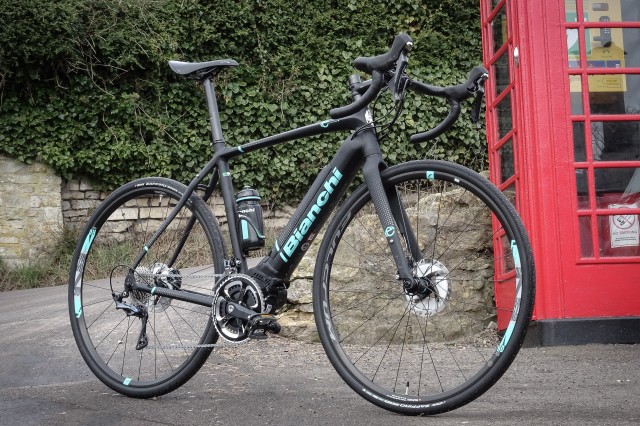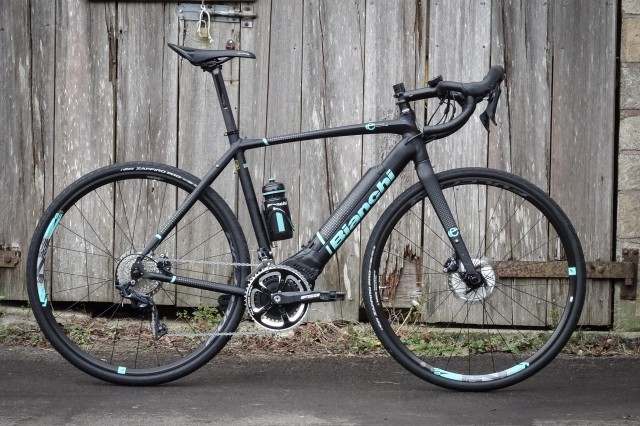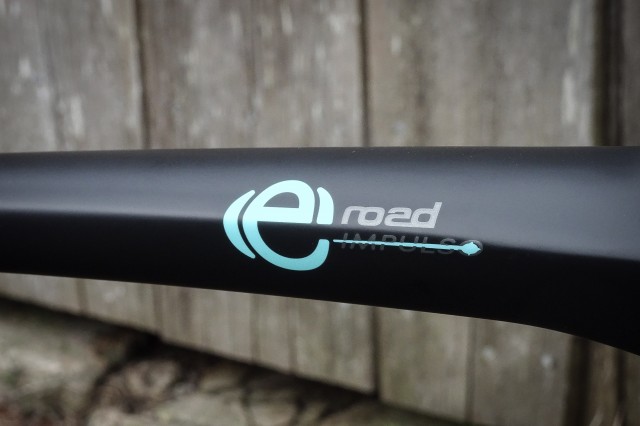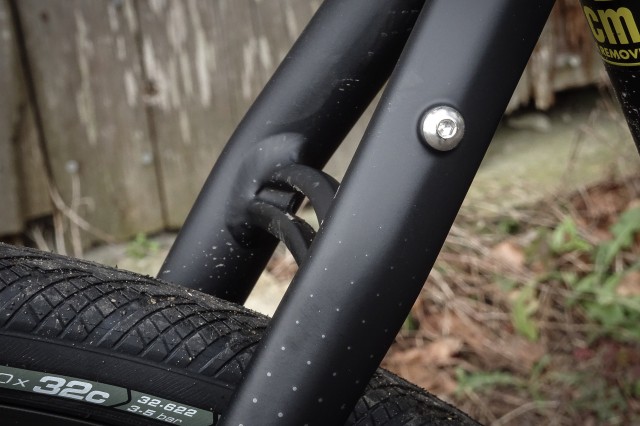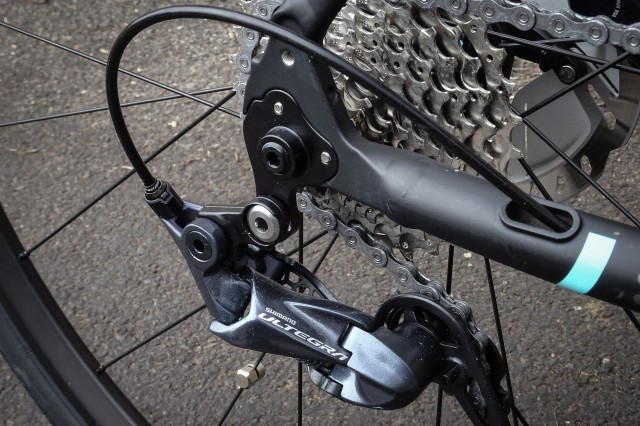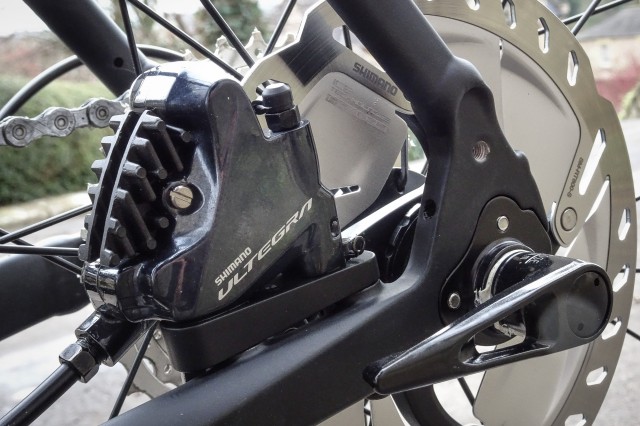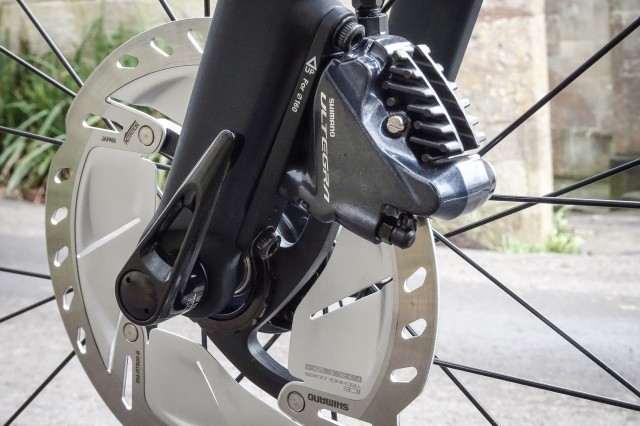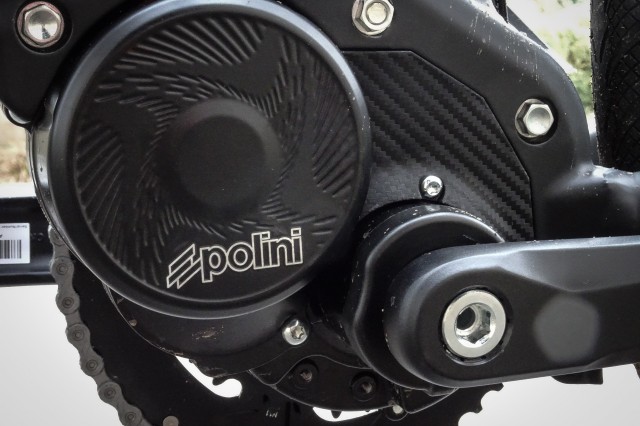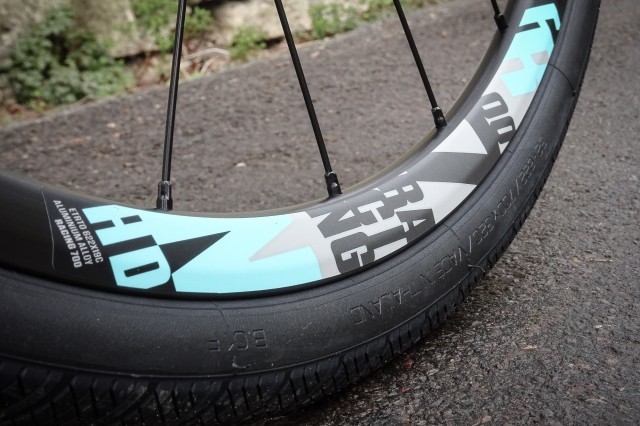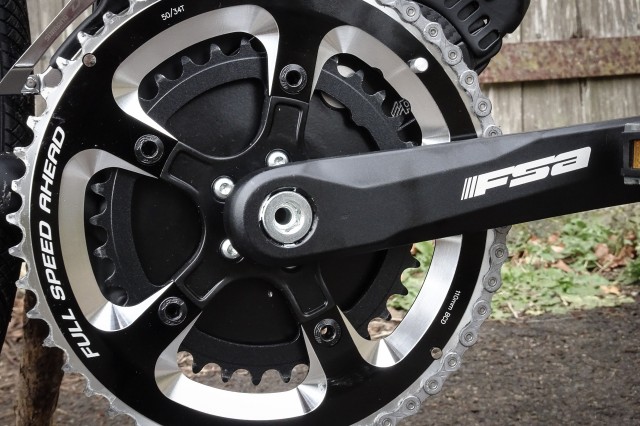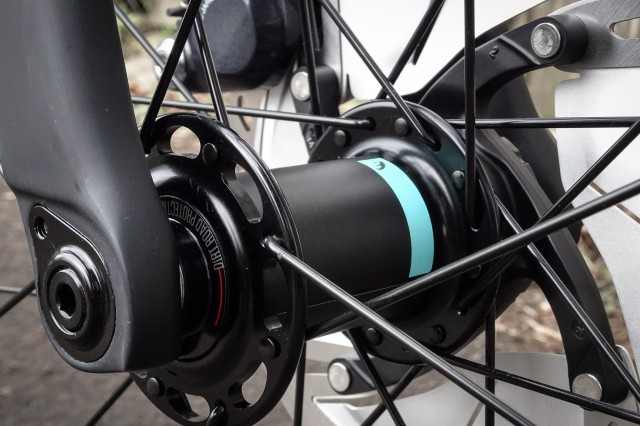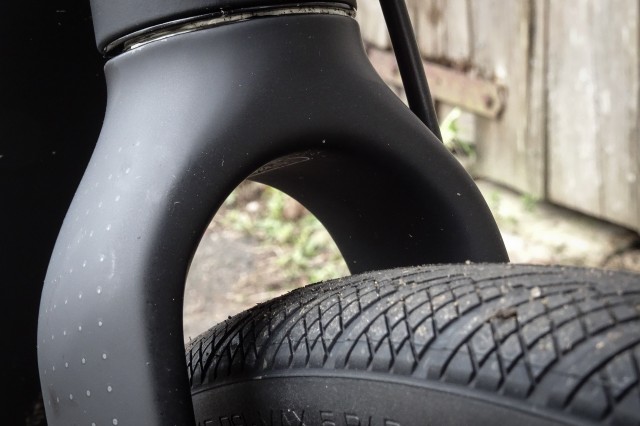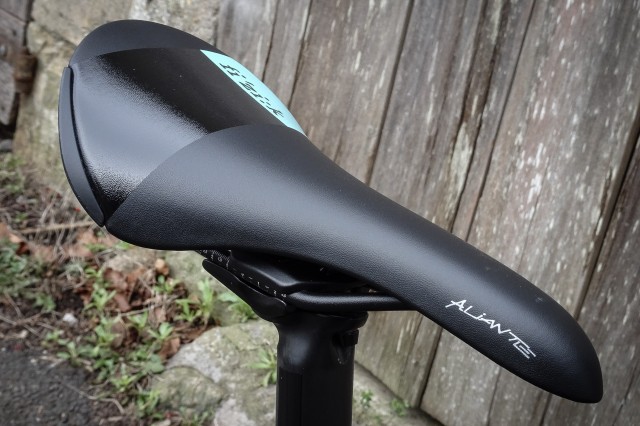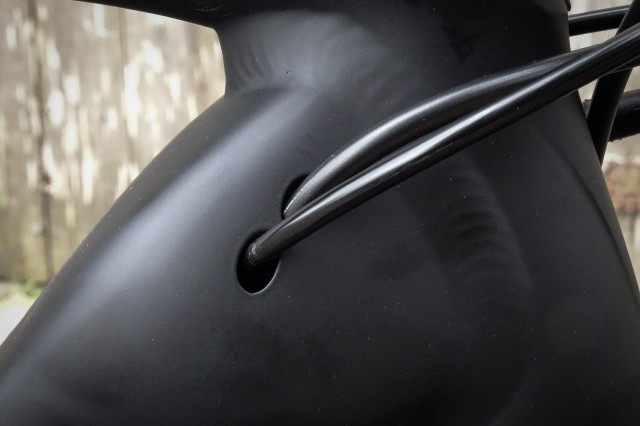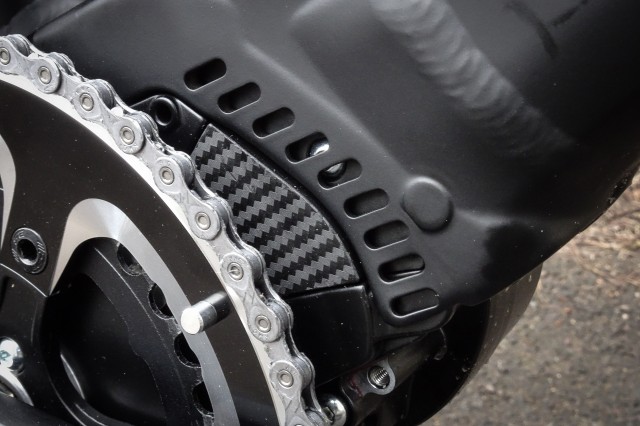Bianchi Impulso e-road
Overview
- Motor is superb
- Rides well when not under power
- Great build spec
- Quite noisy in high assistance modes
- Would be better with a 1x drivertain
You can have your cake and eat it. The Bianchi Impulso e-Road delivers the best-performing motor system we’ve yet encountered, in a package that’s light enough to ride without power. If you’ve been torn between a lightweight road e-bike with a less powerful motor, or a heavy bike with a standard system, the good news is that you don’t necessarily need to choose any more. This is, currently, the best e-road bike we've tried.
Road and gravel bikes are maybe the most interesting sectors of the e-bike market. What should be the priority? On the one hand there’s the likes of Giant and Raleigh making full-fat 19-20kg e-bikes with a road bent. On the other, manufacturers like Focus, Orbea and Cube are working with much lighter motor systems, with a bit less power and reduced battery capacity. That means you can get a much lighter bike – 12.5kg is about the lower limit – and you use the power on and off when you need it, as the range is reduced.
Enter the £4,000 Bianchi Impulso e-Road, which sits smack bang in the middle. With a Polini motor that has a comparable power output on paper to a Bosch Performance Line CX unit, and a 490Wh internal battery in the down tube, you might expect it to be a heavy beast. But in fact our 57cm bike tips the scales at 16.34kg; not the lightest bike we’ve seen but not that much more than the Fazua-powered Cube Agree C:62 hybrid we’ve got in for testing, that’s about 2kg lighter. It’s the lightest full-power, high-capacity e-bike we’ve yet to try.
A new player in the motor market
This is the first bike we’ve tried with the polini motor, which is Italian built in a factory just down the road from Bianchi’s base. It weighs just 2.85kg which is much lighter than a similarly powerful Bosch motor, and puts out 70Nm of torque, which is comparable both to Bosch’s Performance Line CX motor and Shimano’s STEPS E8000 mountain bike unit. It’s built into a tidy alloy frame that incorporates the battery into the down tube. It’s not quite as well hidden as some of the Fazua-powered bikes out there, but the lines of the Bianchi are pretty clean.
You get a Shimano Ultegra drivetrain on the e-Road, with hydraulic disc brakes. The cassette is one rung down the groupset ladder – Shimano 105 – and FSA provide the crankset; Shimano don’t do a double chainset for a mid motor system. Other road e-bikes we’ve seen recently have switched over to a single chainring and a wide-range cassette, but the Bianchi has a full 22-speed setup, with a 50/34 double chainring at the front and an 11-32 cassette at the rear. That should be more than enough gears for anything, especially since you’ve got an extra 250W of help as and when you need it.
The Polini system includes a bar-mounted display which sits centrally over the stem. It gives you access to the five levels of support, and you can turn your integrated lights on and off if you have any fitted (the Bianchi doesn’t). The display is easy to read and has a backlight for after dark too.
When they say ‘road’, Bianchi aren’t talking about super skinny tyres: this e-Road has Fulcrum Racing 700 disc brake CX wheels, which are a well-built, all-purpose sort of a wheel, and the tyres are 32mm Vittoria Zaffiro Pro G+, road oriented, but more about durability and puncture resistance than out-and-out speed. They’re plenty sturdy enough to take in a bit of graded trail if you want to stray from the tarmac. If you’re planning to use your bike on more mixed surfaces then Bianchi also do an e-Allroad build of this bike. It’s a bit cheaper at £3,600; it uses Shimano’s 105 groupset instead of Ultegra and the wheelset is different, which saves you £400 over the e-Road build. You could always get that bike and swap the tyres for a cheaper road build if you wanted – it’s the same frame and motor system – or you could fit gravel tyres to this bike and get the better build; that would be our choice.
Performance: unrivalled (legally)
Dave says: There’s one word that sums up the bike’s performance under power. And that word is: crikey.
It’s not a surprise that it’s got a bit of poke, I suppose. After all, this is the lightest full-fat e-bike that I’ve ridden. At 16.34kg it’s comfortably lighter than the Simplon Sengo that we tested, which was also a heap of fun. Anyway, set the motor to maximum boost and set off up a hill and most of the time you’ll be backing off to keep it under the 26km/h motor cutoff. It’s only when the road rises above about 10% that you really have to put any meaningful effort in to keep it there.
You don’t have to have it on full though, there are five levels of assistance and they’re pleasingly evenly spaced. I found level three to be the best for general knocking around, with level two good for the flat and level four handy on the hills. You don’t really need level five unless you like screaming away from the lights, or setting records up the climbs. But anyway, it’s there if you want it and a lot of fun.
Above the 26km/h motor limit the bike behaves a lot like a normal road bike. Okay, a heavy one, but it’s not the kind of bike that unpleasant to ride at speed, and it isn’t hard to keep it rolling along at above-motor speeds on the flat. It feels a bit draggy when the motor cuts out but mostly that’s because you’re suddenly on your own, rather than because there’s actually much added drag. The motor response is well judged at higher speeds, dropping gradually rather than chopping in and out, even in the highest assistance modes.
Quiet it ain’t. Motor noise is on a par with Bosch and Shimano, and possibly a touch louder. It’s not unpleasant noise, but there’ll be no stealth assistance like you can have from a Brose motor, for example, and if you like the stillness of nature on your rides then you might be spoiling it just a little bit.
The bike has a double chainring transmission for a wider range of gears than it probably needs. You could certainly get away with a single chainring and wider cassette here, but the Ultegra gears worked flawlessly, as they always seem to do. The new Ultegra hydraulic levers are a big improvement on previous versions in terms of ergonomics and looks, and the brakes themselves are still, to my mind, the best road brakes available.
The 32mm Vittoria tyres are about the right width, given the overall weight of the bike, but they’re not the greatest in terms of road feel and switching to something like Schwalbe’s 30mm G-One Speed tyre would make the bike roll better. There’s room for plenty bigger than that: Bianchi also sell the bike as the e-Allroad in a more dirt-oriented build, with much roomier tyres and a slightly lower spec. It’s the same frame, so there’s room for more rubber if you want it, or to fit mudguards over the tyres it comes with. There are rack mounts at the back too, so it’s pretty versatile if you want it to be.
The range is whatever you want it to be, because the e-Road is a bike you can ride without power a lot of the time. We never got anywhere near the bottom of the 500Wh battery on rides of 60-70km, and 100km is well within range if you’re easy on the juice. We’ve put over 1,000m of climbing into the bike on a single ride, too, so you’d probably be able to tackle some serious Alpine cols on this with a full charge.
Jez says: This feels like the first of a new generation of electrically-assisted road bikes. The Polini EP3 assist system is a revelation - it's the first bike we've tried with this system and it combines a low weight with a very healthy output. You don't buy an e-bike just to rob all the local KOMs (right?) but if you did, this would be the one that you want. It really flies up hills - you can stay over 20kph even when the gradient reaches into the teens without really exerting yourself.
I fitted a rack and used this for lazy commuting for a week and it made for very easy progress indeed. It has mounts for rack and mudguards on the aluminium frame and carbon fork, so the practicality boxes are ticked. For commuting duties, however, I think most people are still likely to opt for a more upright flatbar bike. The Bianchi really comes into its own when you're out on a longer ride. The assistance system makes hills easy, and on the flat it rolls well and puts you in a reasonably aerodynamic position.
If you stick it in the top power level, Turbo, you'll find that on a rolling ride you'll likely leave behind your mates unless your mates are all pros. You really don't need to do a lot of work to stay on the pace. Using a lower power level will give you plenty of range for longer rides.
On a more upright, heavier e-bike, there's precious little incentive to push beyond the 25kph or so up to which it assists you. 28kph without assistance feels a very different matter to 25kph with 250W backing you up. On the Bianchi, however, I found it was very feasible to ride at 30-32kph on the flat, especially in a group, at which speed the motor isn't giving any assistance.
It's not a bike that you'll especially relish sprinting for a town sign - that's when you remember that it's a 16kg bike - but it's by far the nicest e-bike I've tried for riding at higher speeds without assistance.
The Polini control unit is a neat little display which gives quite a selection of information including the power from the motor and the power that the rider is putting in. You scroll through the various pages of info as the screen isn't big enough to display multiple channels at the same time. This does mean that you can't see both your remaining range and your speed at the same time - so the range-anxious might want to scroll through regularly. I'd prefer a larger head unit which could display a bit more data.
Overall: as good as e-road bikes get right now
The Bianchi Impulso e-road is top of the pile for the moment. It's packing enough power to really fly up the hills, with a big battery for masses of range, and yet it's still light enough, and rides well enough, to be fun even when the motor's not helping you. Electric road bikes are still really in their infancy, but if you're an early adopter then you should definitely try and book a test ride on this one.
7 comments

> With all the new lighter ebikes coming on the market would you still rate the Impulso e-road if you wanted s high assist road bike?
yes. it depends on your needs. if you're after a bike for leisure road rides then it's still a great bike. the lighter bikes are less powerful, and good if you're riding with a group that tends to leave you on the climbs. If you're more leisure-oriented, or you mostly ride alone, the extra weight isn't a penalty
Hi,
With all the new lighter ebikes coming on the market would you still rate the Impulso e-road if you wanted s high assist road bike?

I bought my E-impulso in March of this year. Now, after a thousand miles, I think that I add another decent comment here.
After having ridden and enjoyed my Flyer Upstreet 5, last year, I wanted something faster and more sporty. After testing the Cube SL and after having checked this website thoroughly, I chose this Bianchi.
The way it handles (very stable and comfortable), the powerful yet very smooth power from the motor (rarely use levels 4 or 5), the battery’s stamina (computer shows 130 miles range), the powerful brakes and the beautiful Italian design provide lots of satisfaction and positive reactions.
Very, very happy with this E-racer!
Best regards, Roy
after 5000 miles the bottom bracket broke be careful take it to your dealer because Bianchi e Polini admitted that there is a big problem.I hope that they are going to solve the problem because the bike is going really well.Tomorrow it will be ready so next week i'm going to let you know if it is ok.Teodoro ps I'm italian in I live in
Hi, That's a very fair review of the bike. I bought one two weeks and 300 miles ago, and, as the days go by, I am becoming more and more impressed with it.
Like many older riders (70+) I wanted an e-bike to keep up with the younger bloods in the pack but I also wanted something with road credentials, plenty of power, the range for anxiety-free 50+ mile day rides and the ability to go on five day tours with panniers. This Bianchi seems perfectly to meet these requirements.
As the review says, it can take a rack and mudguards but, unlike some other e-road bikes, the battery is detachable for charging in an hotel room when the bike is perhaps safely locked away far from a plug. Although the charger is large and, when touring, will take up valuable pannier space, it’s surprisingly light.
I changed the original tyres for Schwalbe DD's 28mm and, in my view, the bike handles and rolls better as a result. It is heavy but once underway you don't notice it. Of course the ride is not as springy and responsive as a carbon lightweight - being more like that of a high quality steel tourer.
I find I’m normally riding with the power on level 2 (from 5) and, using the gears, that's enough to give a good boost on the hills and ensure battery life of at least 80miles. Towards the end of a 50 miler, moving the power setting to Level 3 flattens the final inclines and means you arrive home with a smile on your face. Levels 4 and 5 mean I can cycle up a local half mile 1 in 12 gradient just as if I were riding on a level road with a following wind!
I like the way the software works. At 25kph there's no 'cliff edge' loss of assistance - it declines so gradually that in undulating country I can keep the bike on 26/28kph with 120/150watts of personal effort (measured by the system) and just a whiff of battery power. Indeed, rider only, using the gears and keeping to Level 2 power in country like Hampshire, Surrey or Sussex I think a 100 mile range from the 500W battery would be possible.
How long the battery will last, how reliable will be the Polini motor and associated electronics and what after sales support there will be for these items is an unknown compared to established brands like Bosch or Shimano - but at present I’m very pleased with this bike.

Good to hear you're enjoying e-biking! The Bianchi will certainly take a rack and you can fit mudguards too. The wheels aren't touring spec, for sure, but i wouldn't have any particular worries about them surviving rides with a rear rack and a couple of day's worth of gear. If you were planning a lot of fully loaded touring then you might want to switch them for something a bit more burly, but that wouldn't need to be an expensive upgrade, just go for a handbuilt 36-spoke wheelset from a reputable builder.
Hi just found ebiketips and spent all afternnon reading! I had one knee replaced in 2015 and now the other is going, as a result of which I can sadly no longer really consider conventional bikes for cycling - I still have four. Notwithstanding, and with the prospect of giving upon cycling I converted my old Trek 830 MTB to front wheel 250W electric assistance and bingo, I'm back on the road and loving it.
Prior to my problems my main bike was a Dawes Audax, which I also used for camping cycle touring in the UK and Europe as well as most of my local rides. No longer able to use that + having discovered the delight of an eBike, I now what to find something of an equivale nt in the eBike stable and came across this review for the Bianchi e-road and e-allroad which looks very intetresting and me thinks might do the job - I especially like the battery range.
I would be interested in your thoughts on it's use for this pupose i.e. local riades + touring? I'm concerned whether it will take a rack and the load as the wheels look a bit flimsy e.g. my current Audax has 36 spoke wheels. Also will it take mudguards? + any other relevant comments.
Many thanks, Graham
